Classic Everest Base Camp Trekking in Nepal is a wonderful classical trekking route in the Khumbu Valley. We follow the route of the first pioneers to discover the Himalayas: Overland! Therefore, we start driving to Salleri, the gateway to the Solu Khumbu region. The first few days are hiking through the beautiful alpine region of Solu on our way to Lukla, where nowadays most Khumbu treks start from. From Lukla we continue onwards amongst and alongside the region’s famous inhabitants the legendary Sherpas. These hardy people have carved an existence since time immemorial from the frozen landscape. Passing through Sherpa villages and Monasteries along the way to our destination, Everest Base Camp. From the famous viewpoint Kala Pattar, there are outstanding views of Everest along with Nuptse and Lhotse. In the end we trace back to Lukla for our flight to Kathmandu.
Itinerary Outline:
01 Arrival in Kathmandu (1300m)
02 Kathmandu: sightseeing and trek preparation
03 Drive from Kathmandu to Salleri (2390m) – 8-9 hours
04 Salleri to Nunthala (2220m) – 6-7 hours
05 Nunthala to Bupsa (2360m) – 5-6 hours
06 Bupsa to Chaurikharka (2650m)
07 Chaurikharka to Monjo (2840m) – 4-5 hours
08 Monjo to Namche Bazaar (3438m) – 3-4 hours
09 Acclimatization at Namche Bazaar (3440m)
10 Namche Bazaar to Tengboche (3870m) – 5-6 hours
11 Tengboche to Dingboche (4360m) – 5-6 hours
12 Acclimatization in Dingboche
13 Dingboche to Lobuche (4940m) – 5-6 hours
14 Lobuche to Gorak Shep (5170m), visit Everest Base Camp (5364m) – 6-7 hours
15 Gorak Shep to Kala Patthar (5545m) to Pheriche (4288m) – 7-8 hours
16 Pheriche to Namche Bazaar (3440m) – 6-7 hours
17 Namche Bazaar to Lukla (2860m) – 6-7 hours
18 Fly to Kathmandu
19 Final departure
Arrival in Kathmandu (1300m)
Kathmandu: Sightseeing and trek preparation
Drive from Kathmandu to Salleri (2390m)
Salleri to Nunthala (2220m)
Walking time: 6-7 hours
Nunthala to Bupsa (2360m)
Walking time: 5-6 hours
Bupsa to Chaurikharka (2650m)
Chaurikharka to Monjo (2840m)
Walking time: 4-5 hours
Monjo to Namche Bazaar (3438m)
Walking time: 3-4 hours
Acclimatization day at Namche Bazaar (3440m)
Namche Bazaar to Tengboche (3870m)
Walking time: 5-6 hours
Tengboche to Dingboche (4360m)
Walking time: 5-6 hours
Acclimatization day in Dingboche
Dingboche to Lobuche (4940m)
Walking time: 5-6 hours
Lobuche to Gorak Shep (5170m), visit Everest Base Camp (5364m)
Walking time: 6-7 hours
Gorak Shep to Kala Patthar (5545m) to Pheriche (4288m)
Walking time: 7-8 hours
Pheriche to Namche Bazaar (3440m)
Walking time: 6-7 hours
Namche Bazaar to Lukla (2860m)
Walking time: 6-7 hours
Flight to Kathmandu
Final departure
Classic Everest Base Camp Trekking
For foreign travelers, Everest Base Camp has become one of the most popular trekking destinations in Nepal, offering the chance to gaze on the magnificent north face of the world’s highest peak Mount Everest. Famous for its amazing mountain peaks and the loyalty and friendliness of its inhabitants Sherpa, the Everest Region is one of the most famous destinations for tourists in Nepal. While several routes through the mountains are difficult, there are plenty of places to rest and enjoy meal along the way. Trekking is possible the whole year round in this area. The best time to trek is from the beginning of March to May and from September to November. The winter is very cold and snow may make it difficult to travel higher than Tengboche, and lodges may be closed above this altitude. Summers, are wet and the spectacular peaks are often lost in the clouds. April and early May is a good time to view the hedgerows and trees stuffed into bloom, with Rhododendron, in particular, adding a spectacular spray of color to the landscape.
Everest Base Camp is a term that is used to describe two base camps which are on opposite sides of Mount Everest. South Base Camp is in Nepal side with an altitude of 5,364 m. and North Base Camp is in Tibet side at 5,150 m. These camps are basic campsites on Mount Everest that are used by mountain climbers during their ascent and descent.
Views from EBC/Kalapathar
From EBC you can observe refreshing spectacular view of numerous dangling mountains including Everest and typical Sherpa land with typical house and landscape. Therefore, Everest Base Camp Trek is taken as the best and most popular trekking routes in Nepal as well as in the world. From Kala Pathar we can view the most wonderful sunrise views on the Mt. Everest. Scenery and conversing of the Snow River, avalanche and white dazzling snow capped peaks including Mt. Everest from the top of Kalapathar will enchant you and take you to the world of frantically making your journey a memorable one in your whole life. If you have ever longed to set eyes on the highest Himalayan peaks and rugged perfect glaciers around you, the views from Kalapathar will stay with you forever. We have the best view of Mt. Everest, Mt. Nuptse, Mt. Pumori, Mt. Lotse, Mt. Changtse, Khumbu Glacier, Ama Dablam and south-west face of Everest will be seen from the top of Kalapathar.
Mt. Everest (Top of the World)
Mount Everest is the highest mountain in the world. Its height is 8,848 meters. Its alternate names are Sagarmatha, Qomolangma, and Chomolungma. Mt. Everest lies on the border of Nepal and China, with half of the mountain lying on each side of the borders. Edmund Hillary and Tenzing Norgay first climbed Mt. Everest in 1953, with Hillary taking the photograph of Tenzing Norgay in the summit.
There are several bodies still lying on the upper portions of the mountain above the South Col on the Nepal side and the North East Ridge on the Tibetan side. There are 2 main routes, Southeast and Northeast, for climbing the Mt. Everest. Southeast is most frequently used route because it is generally considered safer and with easier access. Ascent via the southeast ridge begins with a trek to Base Camp at 5,380 meters on the south side of Everest in Nepal. Expedition members usually fly to Lukla (2,860 m.) from Kathmandu and pass through Namche Bazar. Climbers then hike to Everest Base Camp, which usually takes 6 to 8 days, allowing for proper altitude adjustment in order to prevent altitude sickness. Climbing accessories and supplies are carried by yaks, dzopkyos (yak hybrids) and human porters to Everest Base Camp on Khumbu Glacier. In recent years, mountain climbers and explorers have been paying attention on Mt. Everest. It has become many brave people’s dreams to demonstrate their courage and skills by climbing onto the world’s highest peak. The weather is comparatively mild and steady with less rain or snow early March to late May, and again so from early September to late October. These are the two best seasons for tourists and mountain climbers.
Tengboche Monastery
Tengboche Monastery also known as Dawa Choling Gompa, is in the Tengboche village in Khumjung in the Khumbu Region of Eastern Nepal. It is a Tibetan Buddhist monastery of the Sherpa community situated at 3,867 m. The monastery is the largest Gompa in the Khumbu region of Nepal. It was built in 1916 by Lama Guru with strong links to its mother monastery known as Rongbuk Monastery located in Tibet. It was destroyed by an earthquake in 1934 and was consequently rebuilt. In 1989, it was destroyed again by a fire and then rebuilt with the help of volunteers and international support.
Tengboche is famous because of its spectacular and distinctive location. It lies on the main route to the Everest Base Camp of Mt. Everest and offers the first clear views of the highest mountain in the world. Tengboche became famous to the world after Sir Edmund Hillary and Tenzin Norgay Sherpa made the first ascent of Mt. Everest in 1953. A lot has been changed since those days when Tengboche was remote and inaccessible. Today more than 30,000 people come ever year to enjoy the beauty of Tengboche and splendor of the mountains.
From Tengboche there are spectacular views of some of the world’s highest mountains including Nuptse (7,855m), Ama Dablam (6,812m), Lhotse (8,516m), Kantega (6,779m), Tamserku (6,623m) and as well as the many others that form one of the most inspiring ranges of snow mountains anywhere. The ice walls of these mountains control the landscape and avalanches can normally be heard rumbling high up the glaciers.
Package Details:
| DEPARTURE/RETURN LOCATION | Kathmandu | |||||||||
| JOIN GROUP | 1 before departure from Kathmandu. | |||||||||
| SERVICE INCLUDES |
|
|||||||||
| SERVICE DOES NOT INCLUDE |
|

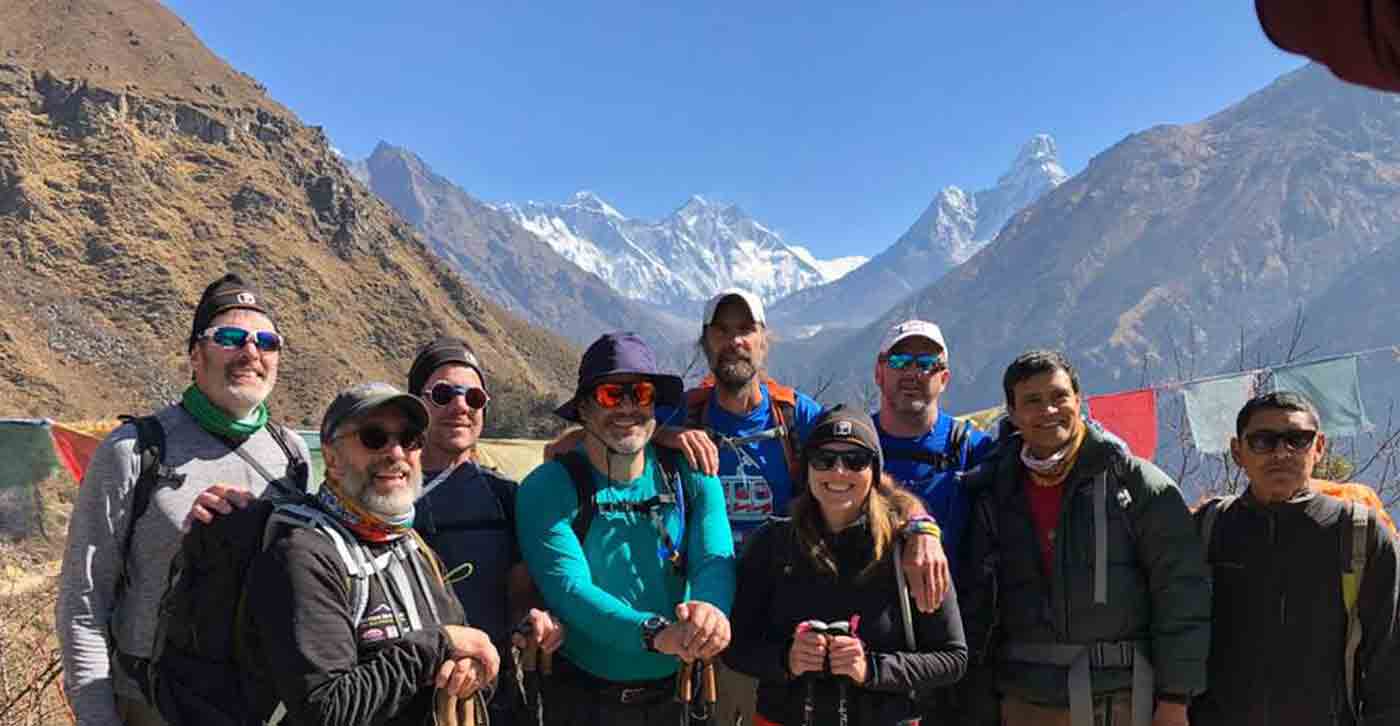
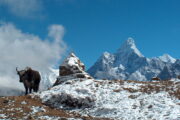
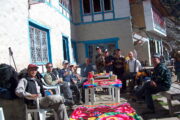
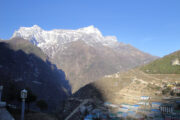
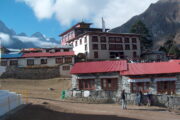
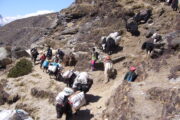
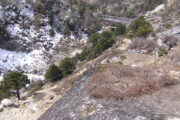
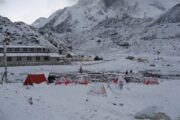
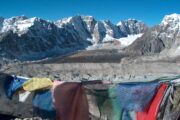
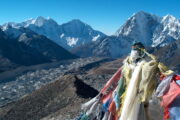
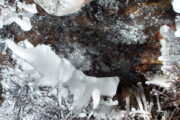
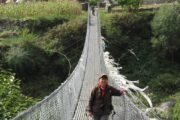
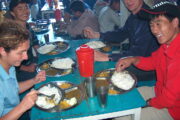
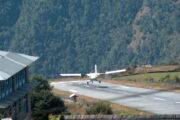
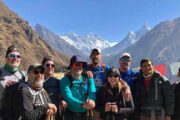
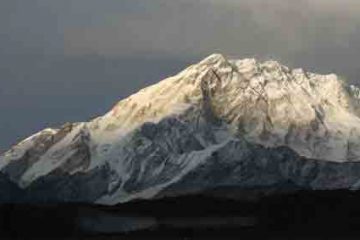
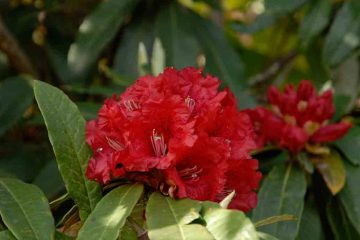
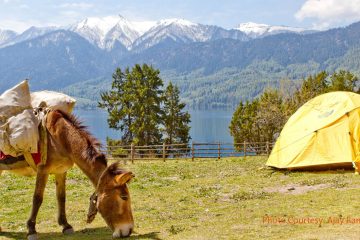
Tour Reviews
There are no reviews yet.
Leave a Review